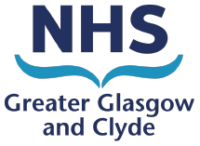This section is about how you, as a registered health care professional (SSSC and NMC), can prepare for the Practice Supervisor (PS), Practice Assessor (PA) or Academic Assessor (AA) roles to support the future workforce of nurses and midwives though effective practice supervision and assessment.
Background
Following publication of the NMC Standards for Education and Training (updated 2023), NHSGGC collaborated with other health boards and Higher Education Institutes to agree and implement a national approach for preparation of the roles of PS, PA or AA.
What do I need to do to become a Practice Supervisor or Practice Assessor?
Firstly, discuss your professional development with your line manager then access the practice supervisors and practice assessors’ learning resource on TURAS Learn, which will prompt you to complete a self-assessment form. **please note that self-assessment is a new learning activity recently added onto this learning resource.
Self-Assessment helps you to identify not only the knowledge and skills you already have in supporting learners, but also new learning that you may require. The learning resource consists of six units and the self-assessment process will guide you to which units you need to undertake to support your development. You might not be required to complete all six units. Please contact your local PEF/CHEF for guidance and support or email practiceeducation@ggc.scot.nhs.uk
Protected Learning Time
Scottish Executive Nurse Directors approved 16 hours of protected learning time to enable nursing and midwifery registrants from NHSGGC to undertake Practice Supervisor (10 hours) and Practice Assessor (additional 6 hours) preparation. This applies to you if you were not previously a mentor, sign-off mentor or practice teacher. Furthermore, you do not need to take protected learning time in a block and should receive support in line with service delivery needs.
If you are a graduate nurse or midwife from a Scottish University, you should have undertaken practice supervisor preparation as part of your undergraduate programme and be “supervisor ready”. Therefore, as a newly qualified nurse or midwife you should follow the Pathway Guidance for NMC Practice Supervisor and Practice Assessor Preparation (below) to guide your ongoing professional development.
NHSGGC Pathway Guidance for NMC Practice Supervisor and Practice Assessor Preparation
The pathway guidance for NMC Practice Supervisor and Practice Assessor preparation outlines the process that you, the registered health care professional, and your line manager must follow in order to prepare you for your role in supervising and/or assessing pre/post registration nursing and midwifery students.
Registered Health Care Professional
- Discuss professional development activity with your line manager
- Access Practice supervisors and practice assessors’ learning resource on TURAS Learn*
- Complete online self-assessment form and activities for those preparing for the Practice Supervisor or Practice Assessor role. Your PEF/CHEF is available for support
- On completion of new learning, discuss/evidence this with line manager and confirm support
- Contact Practice Education Team to arrange HEI programme and Practice Assessment Document (PAD) session and further support
*must be logged into TURAS to undertake modules
Registrant’s Line Manager
- Supportive discussion to agree to this professional development opportunity
- Discuss protected time. Please access Practice Supervisor / Practice Assessor Preparation – NHSGGC for details
- On completion, meet with registrant to discuss/review evidence of new learning
- Update your local training system or Practice Supervisor/Practice Assessor preparation list
- Inform Practice Education Team via to update QMPLE
- Enquire at Appraisal of their role and discuss future continuing professional development requirements
Allied Health Professionals as Practice Supervisors
Typically, Allied Health Professional (AHP) colleagues who are suitably prepared as PSs can sign-off on the Skills and Procedures sections of the PAD, but are not expected to act as the nominated Practice Supervisor.
More information about the preparation work needed for AHP colleagues.
You are welcome to contact your PEF / CHEF for further information and guidance.


